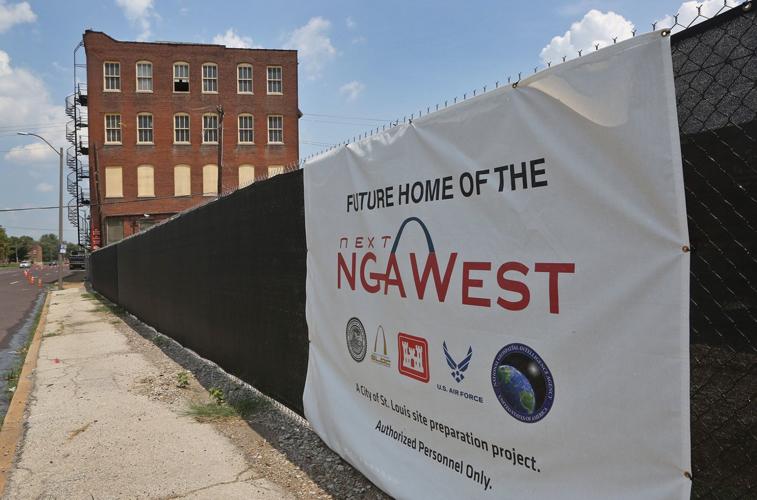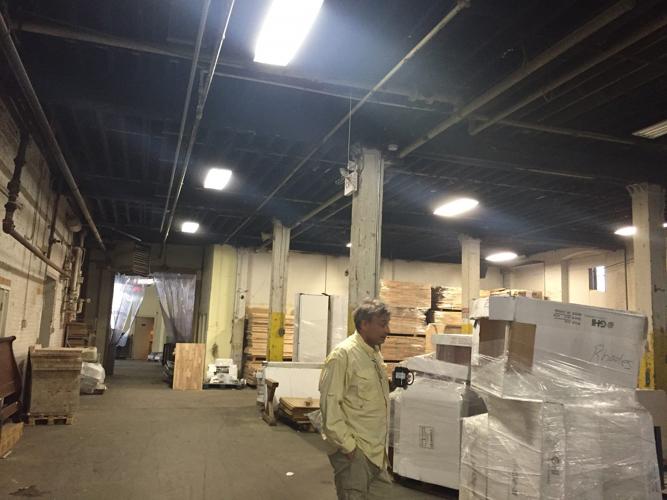ST. LOUIS • The owner of a building taken through eminent domain has lost a long-running fight with the city, and could be required to repay more than $200,000.
After a six-day trial, a 51şÚÁĎ jury deliberated for about 20 minutes Thursday before agreeing with the city’s contention that the value of the now-demolished Buster Brown factory was $573,000.
That was substantially less than the amount sought by Jim Osher, the building’s former owner. Awarded $810,000 by a commission that reviewed the city’s acquisition in 2016, Osher argued at trial that the building’s value was closer to $5.5 million.
. The National Geospatial-Intelligence Agency, which has its western headquarters in south 51şÚÁĎ near the Anheuser-Busch brewery, plans to build its new campus there and move its 3,100-plus jobs to the area.
People are also reading…
The city acquired dozens of properties to make way for the move, and Osher was the final owner contesting the price offered by the city for his property.
Though the trial centered around the value of the former shoe factory at the corner of Jefferson and Cass avenues, it dredged up new questions about Paul in the area and the developer’s use of a now-lapsed state tax credit program.
Osher had pointed to a sale of the Buster Brown building to McKee in 2011 for $3.75 million to argue the building had a far higher value than the city paid.
McKee used state tax credits to pay his company and his attorneys thousands of dollars in fees.Â
But attorneys for the city alleged that the sale was a “sham” that inflated the building’s value to procure state Distressed Area Land Assemblage tax credits that Osher split with McKee. No money actually changed hands, the city’s lawyers sought to show, and the sale, which Osher seller-financed, was later unwound when the NGA project became a reality and McKee deeded the property back to Osher.
“Fundamentally what happened is the jury concluded, like the (Missouri) Department of Economic Development did, that it was not a legitimate sale and they should place no weight on that,” said Jerry Carmody, a partner in Carmody MacDonald, which represented the city at trial and in negotiations with landowners for the NGA property. “The whole rationale for the McKee introduction into the case was to show that that sale was not a legitimate sale.”
Osher’s attorney, Tracy Gilroy, declined to comment. It’s not yet clear whether Osher will appeal. Osher has a separate case pending in federal court over relocation assistance from the city.
Osher’s dealings with McKee and the developer’s use of some $43 million in tax credits to assemble hundreds of acres in north 51şÚÁĎ over the last decade often overshadowed arguments over the value of the building. The eminent domain case allowed city lawyers to access emails and records from McKee’s companies discussing the deal and unearthed Department of Economic Development documents showing that the department had flagged the sale and clawed back tax credits that would have been issued to McKee on his other purchases in the area.
It also pointed to at least one McKee transaction where it appeared McKee was issued $2.5 million in tax credits for a building he owned for only a few months. The Department of Economic Development never caught that one, raising questions about his other real estate transactions. 51şÚÁĎ Mayor Lyda Krewson has since pledged to conduct an investigation into McKee and his use of state tax money to assemble land north of downtown.
The city’s future relationship with McKee is unclear. He has long held development rights in the NorthSide Regeneration area as part of a tax-increment financing agreement approved by the city in 2009. That agreement is legally binding, and
Some residents have long been frustrated at the lack of progress in the area. , .
McKee, who was called as a witness in the trial, maintains that the NGA project in north 51şÚÁĎ wouldn’t have become a reality without his work assembling acreage in the area and the initial pitch his companies sent to the federal government offering the site. The city ultimately ended up leading the effort to assemble a site, eventually being forced to buy back property it had previously sold to McKee in the area.
















